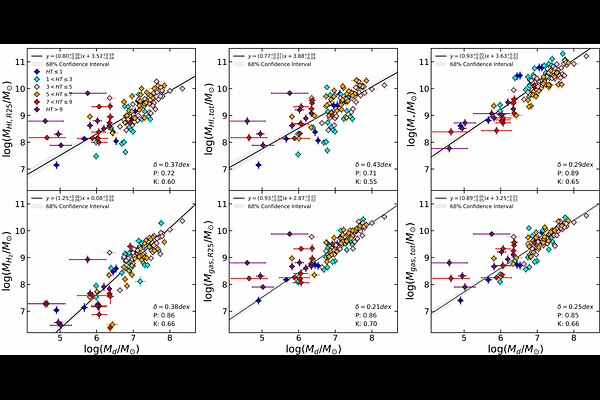Exploring the interplay of dust and gas phases in DustPedia star-forming galaxies

Exploring the interplay of dust and gas phases in DustPedia star-forming galaxies
Francesco Salvestrini, Simone Bianchi, Edvige Corbelli
AbstractMolecular gas is the key ingredient of the star formation cycle, and tracing its dependencies on other galaxy properties is essential for understanding galaxy evolution. In this work, we explore the relation between the different phases of the interstellar medium (ISM), namely molecular gas, atomic gas, and dust, and galaxy properties using a sample of nearby late-type galaxies. To this goal, we collect CO maps for 121 galaxies from the DustPedia project, ensuring an accurate determination of $M_{H2}$, the global molecular gas mass. We investigate which scaling relations provide the best description of $M_{H2}$, based on the strength of the correlation and its intrinsic dispersion. Commonly used correlations between $M_{H2}$ and star formation rate (SFR) and stellar mass ($M_{\star}$) are affected by large scatter, which accounts for galaxies that are experiencing quenching of their star formation activity. This issue can be partially mitigated by considering a "fundamental plane" of star formation, fitting together $M_{H2}$, $M_{\star}$, and SFR. We confirm previous results from the DustPedia collaboration that the total gas mass has the tightest connection with the dust mass and that the molecular component also establishes a good correlation with dust. Although dust grains are necessary for the formation of hydrogen molecules, the strength of gravitational potential driven by the stellar component plays a key role in driving density enhancements and the atomic-to-molecular phase transition. Eventually, we investigated the correlations between ISM components and monochromatic luminosities at different wavelengths: we proposed mid and far-IR luminosities as reliable proxies of $L^{\prime}_{CO}$ for sources lacking dedicated millimeter observations. Luminosities in mid-IR photometric bands collecting PAH emission can be used to trace molecular gas and dust masses.